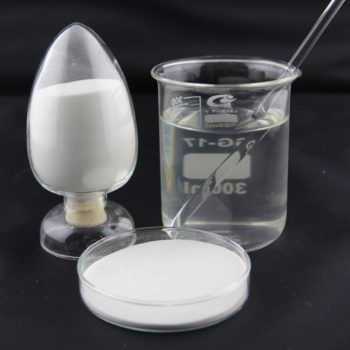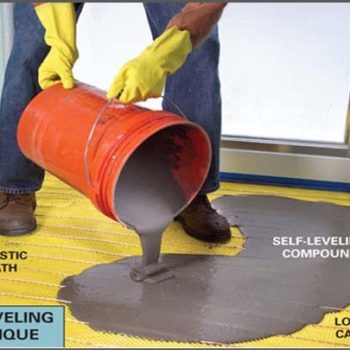Application of sodium carboxymethyl cellulose and hydroxyethyl cellulose in daily chemical products
Cellulose ether is a widely use polymer fine chemical material which is made by chemical treatment of natural polymer cellulose. Since the manufacture of nitrocellulose and cellulose acetate in the 19th century.
chemists have developed a number of cellulose ether series cellulose derivatives. New areas of application are constantly being discover and involve many industrial sectors.
Cellulose ether products such as sodium carboxymethyl cellulose (CMC), ethyl cellulose (EC), hydroxyethyl cellulose (HEC), hydroxypropyl cellulose (HPC), methyl hydroxyethyl cellulose (MHEC) .And cellulose such as methyl hydroxypropyl cellulose (MHPC) is known as “industrial MSG” .And has been widely use in oil drilling, construction, coating food, medicine and daily chemistry.
Now sodium carboxymethyl cellulose (CMC) and hydroxyethyl cellulose (HEC) are used as water-soluble rheological additives for daily chemical products such as toothpaste, shampoo, shower gel, hand soap and shoe polish. Thicken. Prevent the sedimentation of insoluble materials.
Daily Chemicals:
HEC is an effective film former, binder, thickener, stabilizer and dispersant in shampoos, hair sprays, neutralizers, hair conditioners and cosmetics;It is a soil reprecipitant in washing powder; because HEC dissolves rapidly at high temperature, it can speed up the production process, so it can improve production efficiency; the obvious feature of HEC-containing detergent is to improve the smoothness and mercerization of fabric.
Paper and ink chemicals: HEC is use as a sizing agent for paper and board, as well as for thickening and suspension of water-based inks.
In the papermaking process, HEC’s superior properties include compatibility with most gums, resins and inorganic salts. Sex, low foam, low oxygen consumption and a smooth surface film.
This film has low surface permeability and strong gloss; paper coated with HEC can be use for high quality picture printing; in water based ink manufacturing.
Application examples
CMC and HEC have been widely use in daily chemical products such as toothpaste, body wash, hand lotion, skin cream, shampoo and glycerin lotion, shoe polish and detergent, which need to be thicken to form a stable emulsion system.
1 toothpaste
CMC-straight is one of the important raw materials for making toothpaste.
Its function is to uniformly mix the liquid raw material of the toothpaste and the solid raw material, so that the toothpaste forms fluidity and appropriate viscosity, and has certain brightness and fineness.
Ordinary type toothpaste without special effect additive formula, you can use CMC as a binder. However, the anionic CMC is sensitive to high concentration ions, which will reduce the CMC adhesion performance, and the CMC is of high quality.
Special effects are limit in toothpaste. The use of non-ionic HEC as a binder enhances the performance of the binder against high concentrations of ions. The storage stability of the paste is greatly improve, and the storage time of the toothpaste is prolong.
Toothpaste manufacturers can use CMC~HEC in combination with high-salt toothpaste, so that the cost of the product does not change much.
The CMC applied to the toothpaste is DS=0.9~1.0, the viscosity specification is 6500 mPa·s, and the viscosity of the HEC is 6000 mPa.s (2% aqueous solution, 25C, Broofield viscometer).
2 body wash
The lotion with the soap base as the main active ingredient has no smooth feeling of the general surfactant after use. It is easy to clean and protects the natural luster of the skin.
Moreover, HEC has excellent electrolytic resistance, and its solution contains a high concentration of salt and is stable. HEC is therefore the best choice for soap shower gel thickeners.
The viscosity of this type of HEC is 30,000 mPa s (2% aqueous solution, 25C, Broofield viscometer).
3 hand sanitizer
Since the solubility of the disinfectant and the bactericide add to the hand sanitizer in the aqueous solution is very different.And a uniform and stable emulsifying system can be formed by using HEC. This HEC has a viscosity of 30,000 mPa·s (2% aqueous solution, 25 ° C, Broofield viscometer).
4 cream
In this oil/water or water/oint product, HEC acts as an emulsifier, thickener and stabilizer. Moreover, the viscosity of this HEC is 100,000 mPa·s (2% aqueous solution, 25 ° C, Broofield viscometer) in an amount of 0.1% to 0.5%.
5 mask
Peeling emollient mask
The peeling type moisturizing mask is also called a film type moisturizing mask. And the product is in a liquid state which is easy to flow.
Therefore, from the viewpoint of composition, polyvinyl alcohol, polyvinylpyrrolidone, carboxymethylcellulose, polyvinyl acetate, sodium alginate and other colloids are generally used as a main raw material capable of forming a film.
Among them, polyvinyl alcohol has the best effect and can form a film quickly. However, when applied to the skin, the adhesion is too strong to remove.
Polyvinyl alcohol products can be control at about 10~15%, and a certain amount of carboxymethyl cellulose and sodium alginate can be added.
So he add a moisturizer to the polyvinyl alcohol mask to protect or extend the product’s storage and nourish the skin. The humectant is usually propylene glycol, glycerin, polyethylene glycol, silicone oil and the like.
If you have any questions, you can send them to my email : tanyatao@qinahaochem.com
whatsapp: 17718245679


